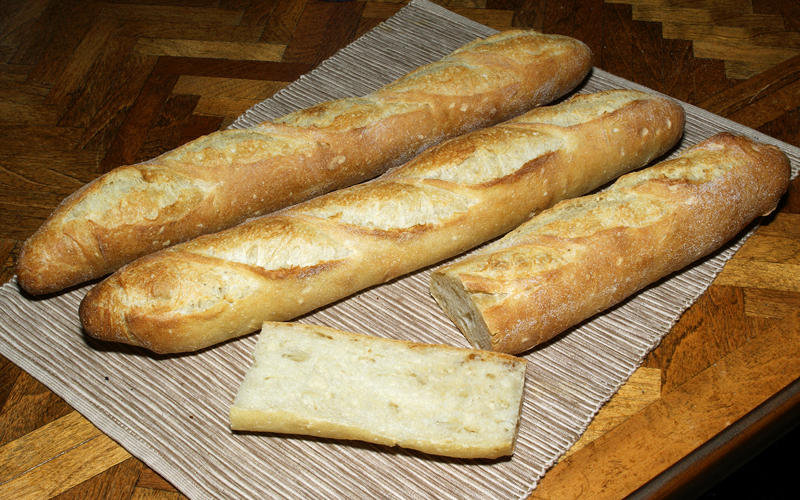davidg618's blog
Proofing Box
The microwave oven is a fine proofing box. With the door ajar, to keep the light on, its internal temperature is 78°F. Two small, round brotforms, or two oblong ones fit snuggly, but forget baguettes, or family size challah. And if I want 89°F I'm stymied--until now.
Overnight Baguettes w/Liquid Levain
Inspired by LisaL's question Baguettes by noon? I baked a sourdough version of my overnight baguette formula for the first time.
Christmas baking
This year I sent all my children and their families, and a couple of dear friends a loaf of sourdough, and a sampling of cookies: Welsh Cakes, Date-Nut Pinwheels--reminiscent of their great-grandmother--and biscotti, a recent discovery and new favorite of mine.
After a week of marathon baking:
10 loaves sourdough--our oven can only bake two at a time,
19 dozen Welsh Cakes,
14 dozen Date-Nut Pinwheels,
14 dozen Biscotti (Parmesan-Blackpepper, Cherry Pecan, Hazlenut-Citron, and Amaretto-Almond)
It's great to be baking again
I mentioned in a post about a week ago I'd been laid up for seven weeks, unable to walk more than ten steps, let alone bake bread. The last four days I've been baking sourdough--two variations of the base 45%/45%/10%:Bread Flour/AP Flour/Whole Rye Flour; 68% Hyd., and 28% prefermented Bread Flour in the sourdough starter--nothing fancy, nothing new but just being able to bake leaves me humble and grateful once again I can.
Back to Baking
I've been immobile for the past two months with sciatica. With steroid treatment and physical therapy, it's nearly completely diminished. Fortunately, the freezer was well stocked with baguettes, sourdough loaves, and a couple of Jewish Ryes at the onset--now nearly depleted.
Yesterday afternoon, after a two month hiatus, I celebrated my new-gotten mobility by mixing dough for my Overnight Baguettes formula; shaped and baked them this morning.
A Marvelous Site and Resource
There are, at least, two threads running currently whose subjects deal with "the past'":
http://www.thefreshloaf.com/node/18072/primitive-cooking-techniques-amp-discussions
and,
Oops!
Yesterday I baked two sourdough boules; it's become a weekly chore. Sourdough has all but replaced our pre-starter days' bread machine whole wheat or white sandwich loaf dough. Two loaves, with a baguette or two, and occasionally Jewish Rye keeps the two of us well stocked for a week to ten days.
Nice looking loaves, yes?
And now, another point of view.



